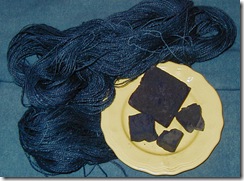Exploring the Innovations of Sulphur Black 1 in Textile Manufacturing and Its Applications
Understanding Sulphur Black 1 The Role of a Key Dye in Textiles
Sulphur Black 1, a popular dye in the textile industry, finds its place as a staple for coloring cotton and other cellulosic fibers. This dye has garnered attention due to its remarkable properties, affordability, and versatility, making it an essential component in fabric dyeing processes.
What is Sulphur Black 1?
Sulphur Black 1 is a synthetic dye that falls under the category of sulphur dyes, characterized by their ability to react with fiber material to create permanent color. Initially introduced in the early 20th century, its chemical structure includes a complex arrangement of sulphur and aromatic compounds which allow it to bond effectively to fibers. The resulting color is a deep, rich black that is not only aesthetically pleasing but also provides good light and wash fastness properties.
Application in the Textile Industry
The primary use of Sulphur Black 1 lies in the textile industry, where it is employed for dyeing cotton fabrics, yarns, and other cellulosic materials. The dyeing process typically involves a reduction reaction where the dye is converted into a soluble form that can penetrate the fiber. After dyeing, the fabric undergoes oxidation to restore the dye's original color, resulting in the desired shade of black.
One of the significant advantages of Sulphur Black 1 is its cost-effectiveness. Compared to other dye types, such as reactive or vat dyes, sulphur dyes are generally cheaper, making them a preferred choice for large-scale productions. Additionally, Sulphur Black 1 has exceptional compatibility with a range of other dyes, allowing for the creation of complex shades and patterns, further enhancing its versatility.
Environmental Considerations
sulphur black 1 company

Despite its widespread use, the application of Sulphur Black 1 is not without environmental concerns. The production and use of sulphur dyes have raised issues regarding wastewater management, as the dyeing process can release harmful chemicals if not properly treated. Therefore, textile manufacturers are encouraged to implement sustainable practices, including efficient waste treatment systems and the use of eco-friendly alternatives where possible.
Recent advancements in the textile industry have also led to the development of greener dyeing technologies. Innovations such as pre-reduction of sulphur dyes and the use of enzyme-based treatments help minimize environmental impact, which is particularly crucial in a world increasingly aware of sustainability and eco-consciousness.
Market Trends and Future Prospects
The global demand for Sulphur Black 1 remains significant, particularly in regions with established textile manufacturing industries such as Asia and Europe. As the fashion and apparel sector continues to grow, the need for durable and cost-effective dyes will likely keep Sulphur Black 1 in demand.
Moreover, with rising awareness about sustainability, there is a shift towards the development of eco-friendly dyes. Companies are now investing in research and innovation, seeking to create dyes that meet stringent environmental standards without compromising quality. This could potentially lead to the evolution of Sulphur Black 1 into a more sustainable and environmentally friendly product in the future.
Conclusion
Sulphur Black 1 embodies a blend of functionality and economics that has made it a staple in the textile dyeing industry. While its rich color and performance characteristics continue to drive its usage, the industry must navigate the challenges of environmental sustainability. With ongoing innovations and a focus on eco-friendly practices, Sulphur Black 1 has the potential to remain relevant and widely used in fabric dyeing for years to come. The balance between quality, cost, and environmental responsibility will shape the future of this important dye, ensuring its place in the evolving landscape of textile manufacturing.
-
The Timeless Art of Denim Indigo Dye
NewsJul.01,2025
-
The Rise of Sulfur Dyed Denim
NewsJul.01,2025
-
The Rich Revival of the Best Indigo Dye
NewsJul.01,2025
-
The Enduring Strength of Sulphur Black
NewsJul.01,2025
-
The Ancient Art of Chinese Indigo Dye
NewsJul.01,2025
-
Industry Power of Indigo
NewsJul.01,2025
-
Black Sulfur is Leading the Next Wave
NewsJul.01,2025

Sulphur Black
1.Name: sulphur black; Sulfur Black; Sulphur Black 1;
2.Structure formula:
3.Molecule formula: C6H4N2O5
4.CAS No.: 1326-82-5
5.HS code: 32041911
6.Product specification:Appearance:black phosphorus flakes; black liquid

Bromo Indigo; Vat Bromo-Indigo; C.I.Vat Blue 5
1.Name: Bromo indigo; Vat bromo-indigo; C.I.Vat blue 5;
2.Structure formula:
3.Molecule formula: C16H6Br4N2O2
4.CAS No.: 2475-31-2
5.HS code: 3204151000 6.Major usage and instruction: Be mainly used to dye cotton fabrics.

Indigo Blue Vat Blue
1.Name: indigo blue,vat blue 1,
2.Structure formula:
3.Molecule formula: C16H10N2O2
4.. CAS No.: 482-89-3
5.Molecule weight: 262.62
6.HS code: 3204151000
7.Major usage and instruction: Be mainly used to dye cotton fabrics.

